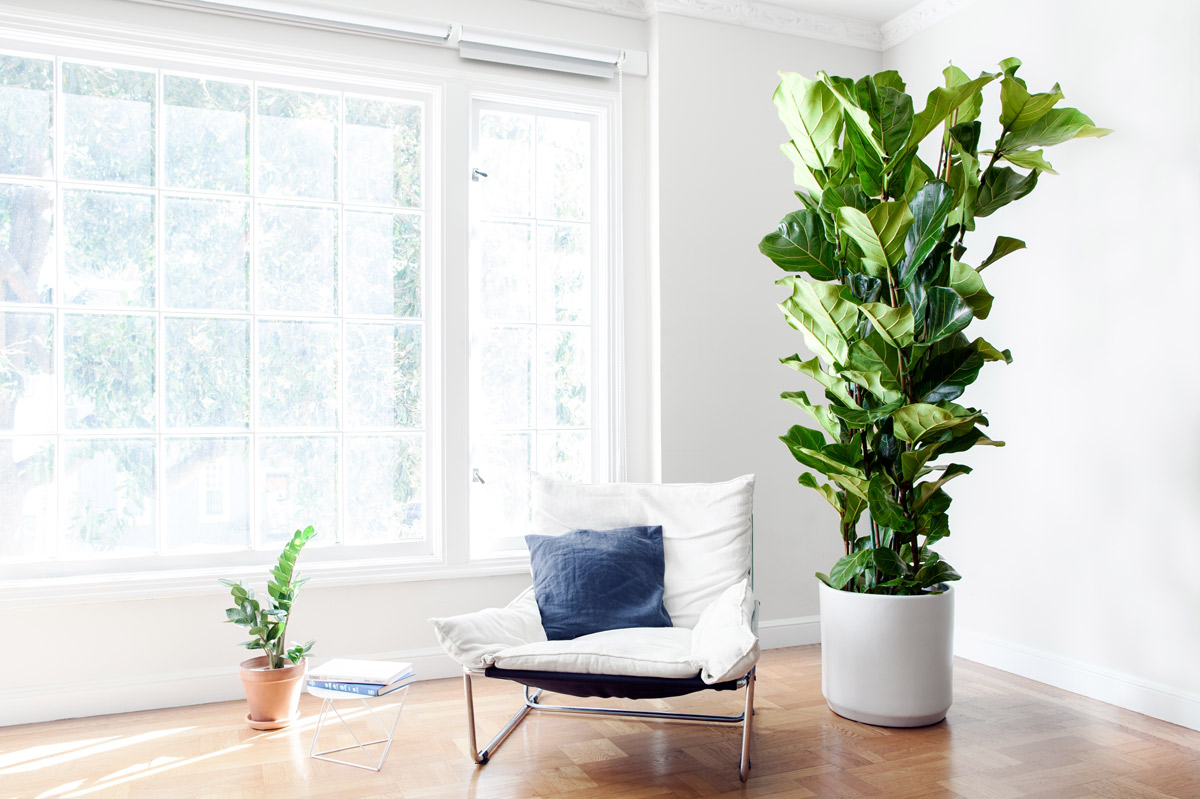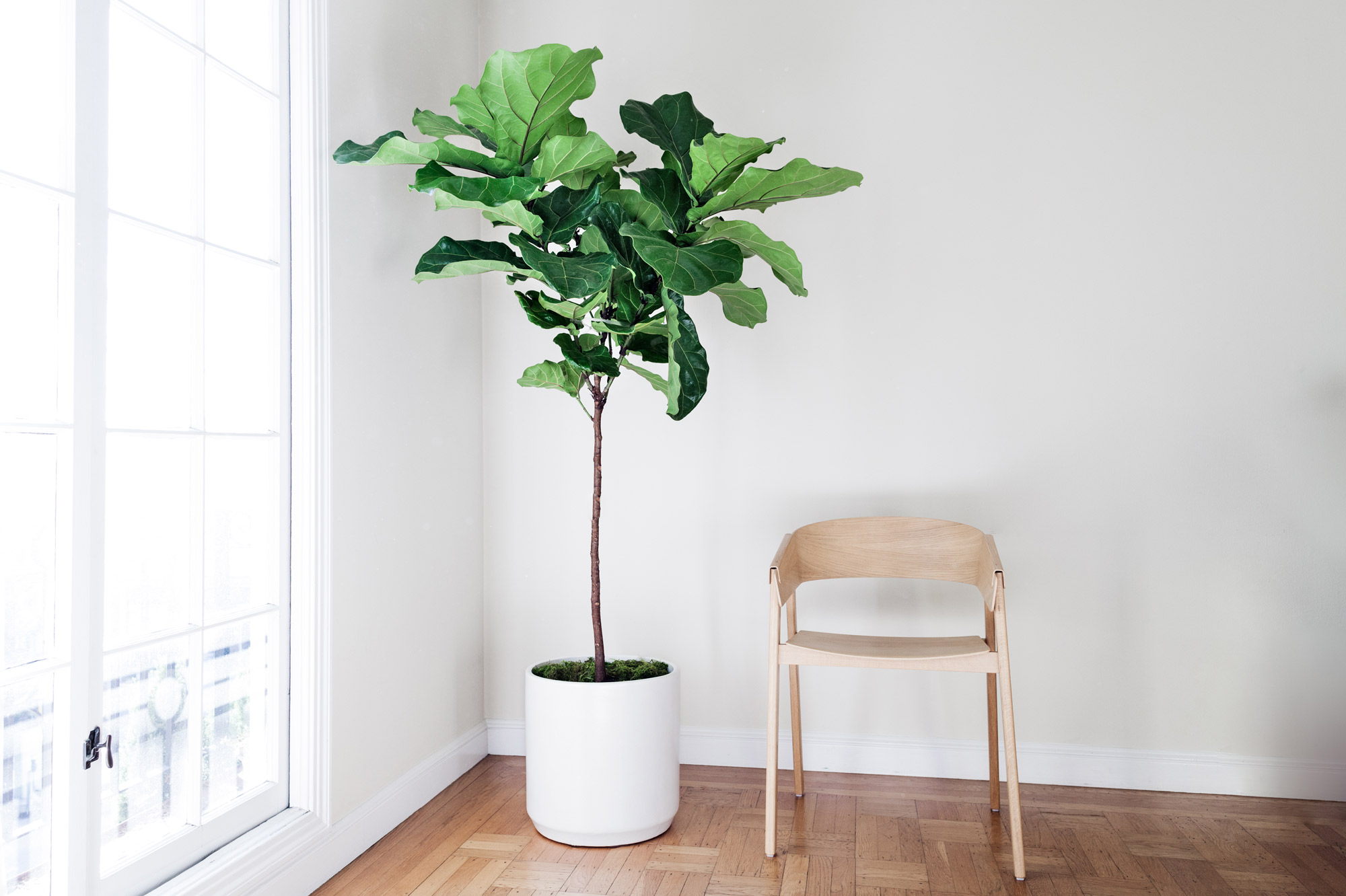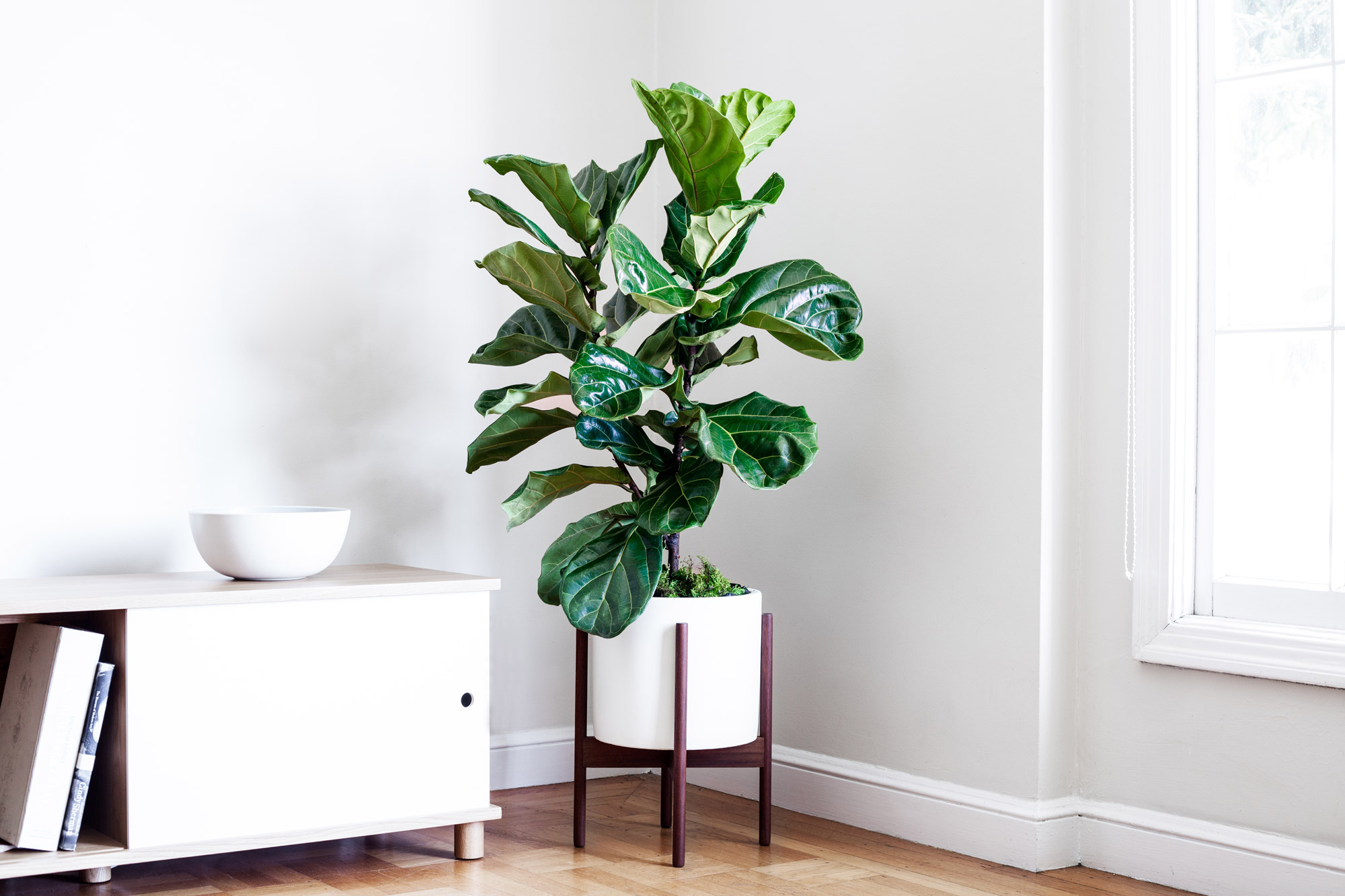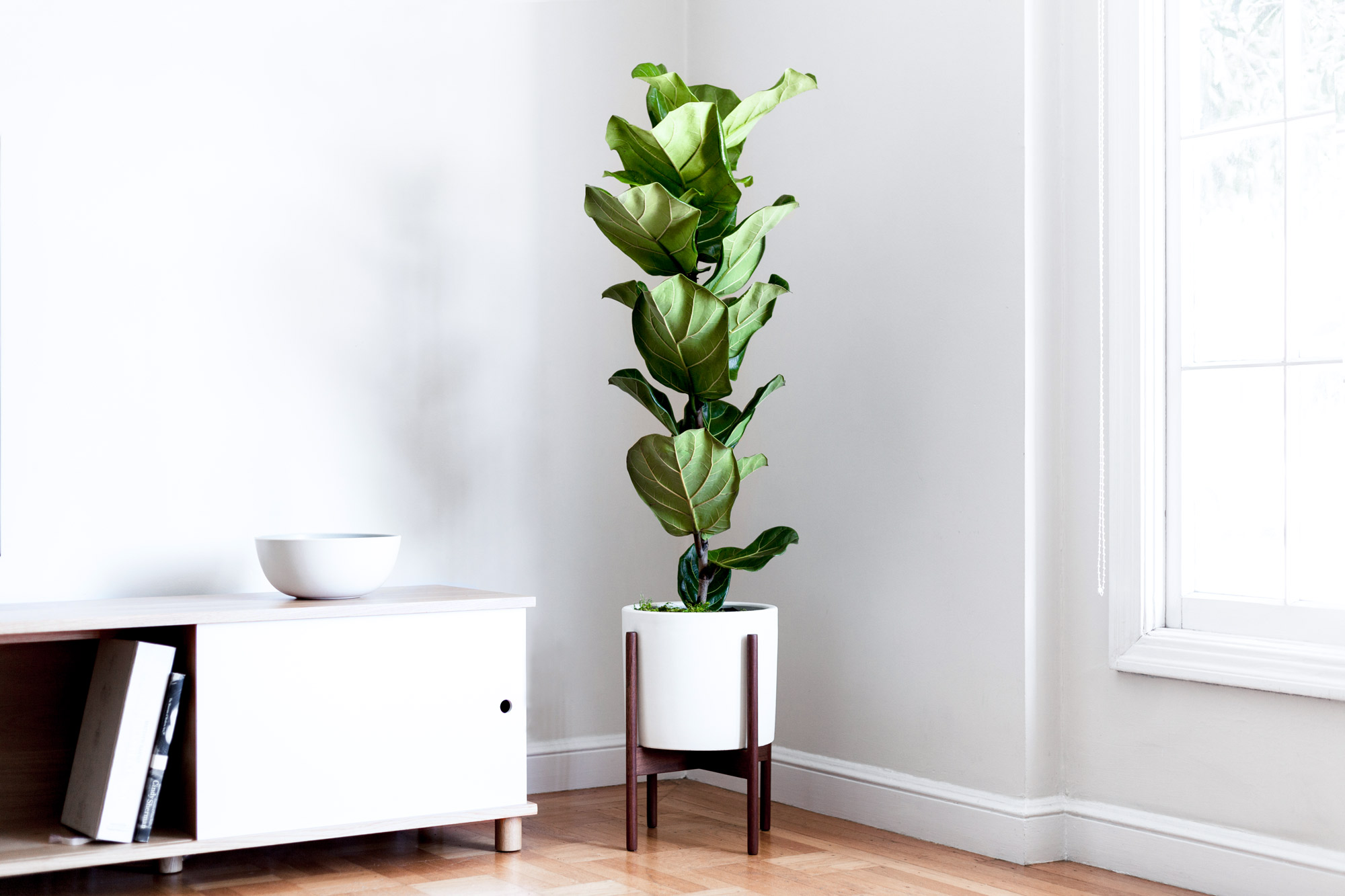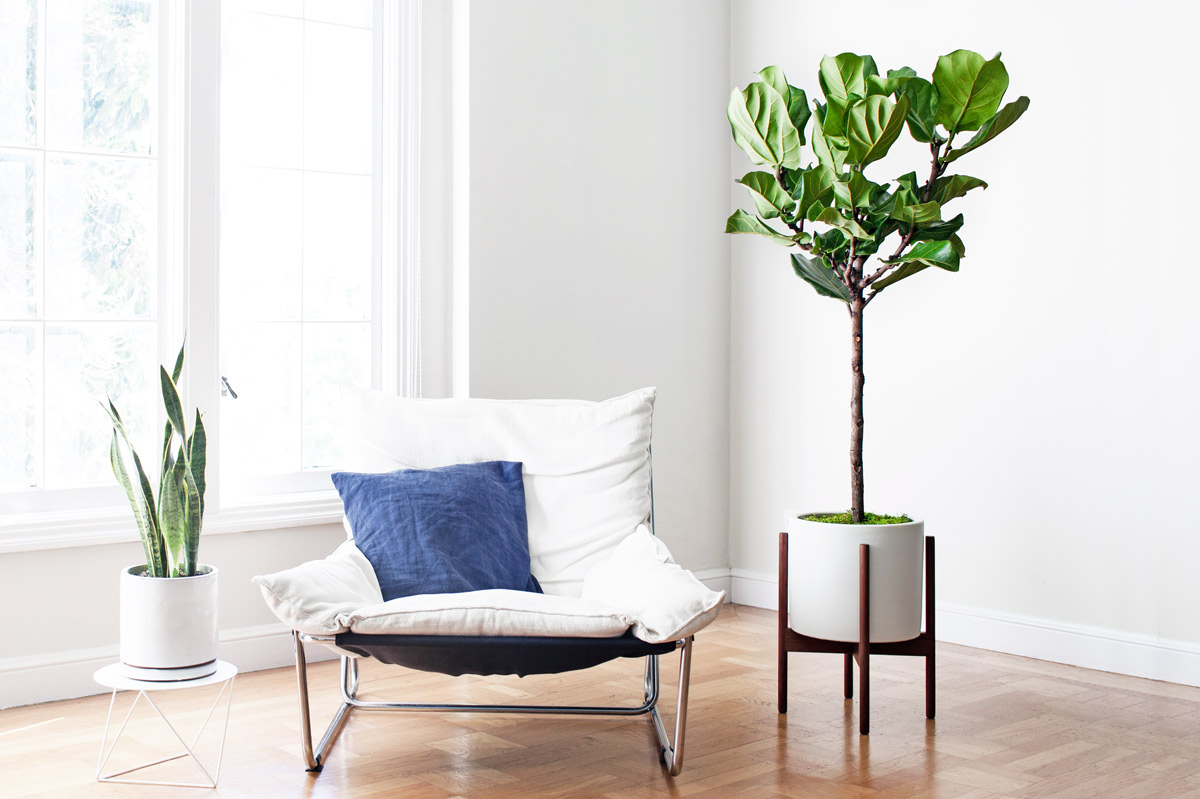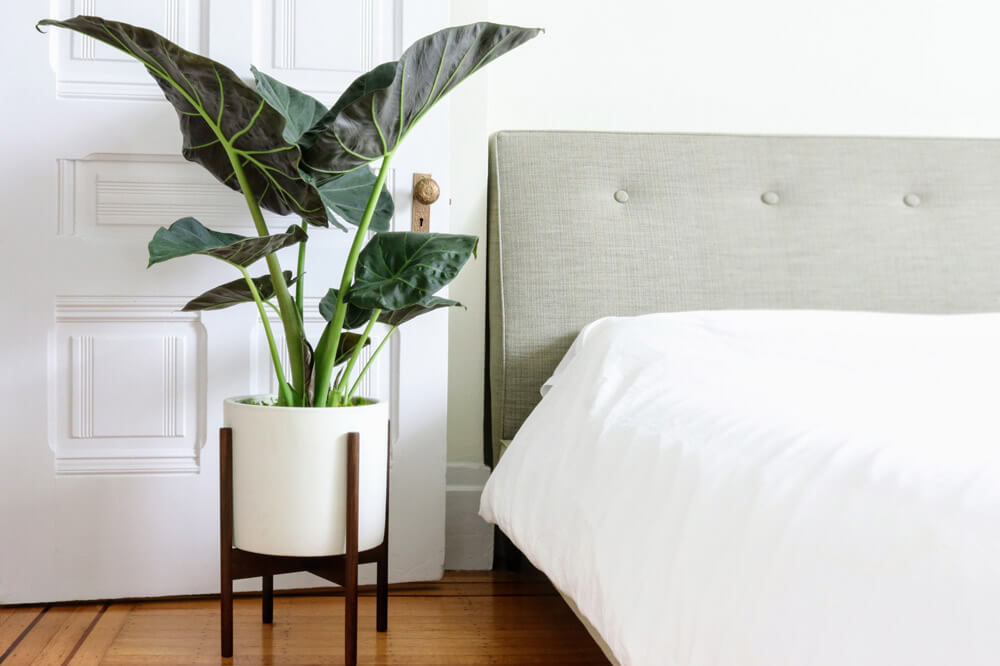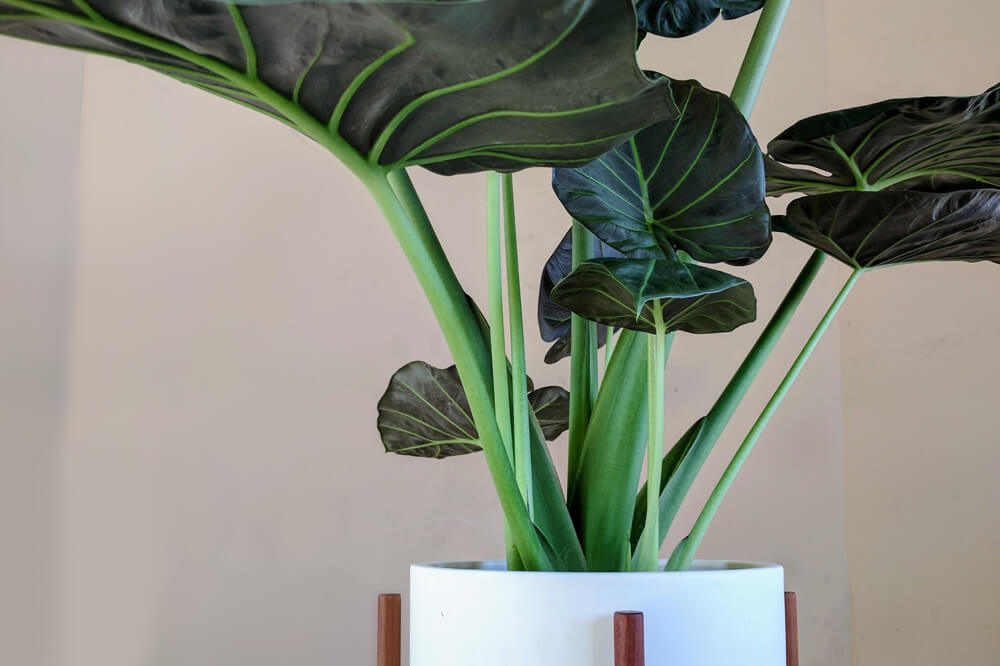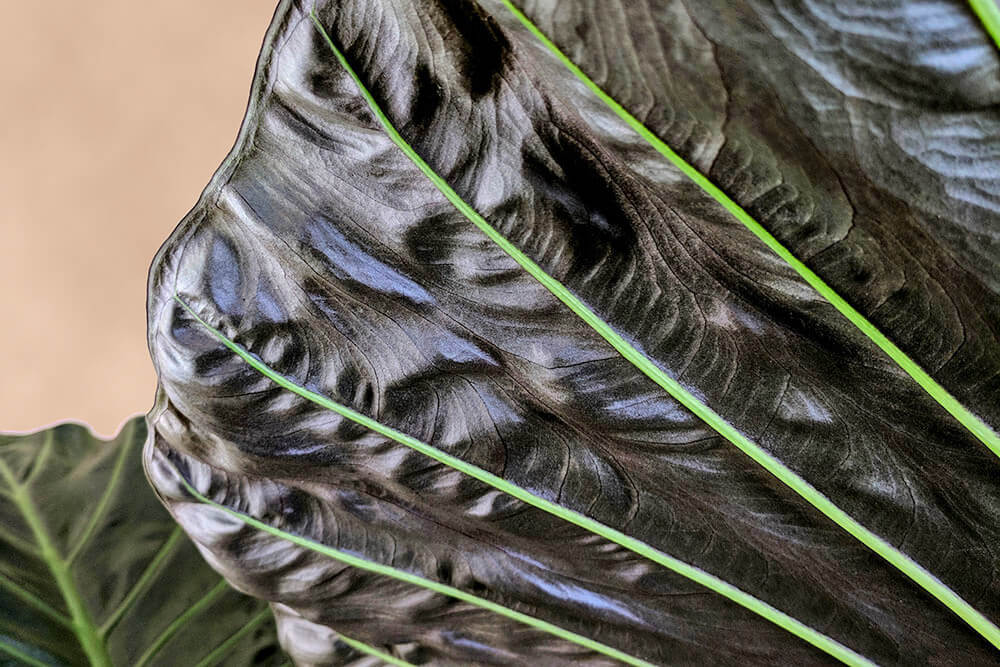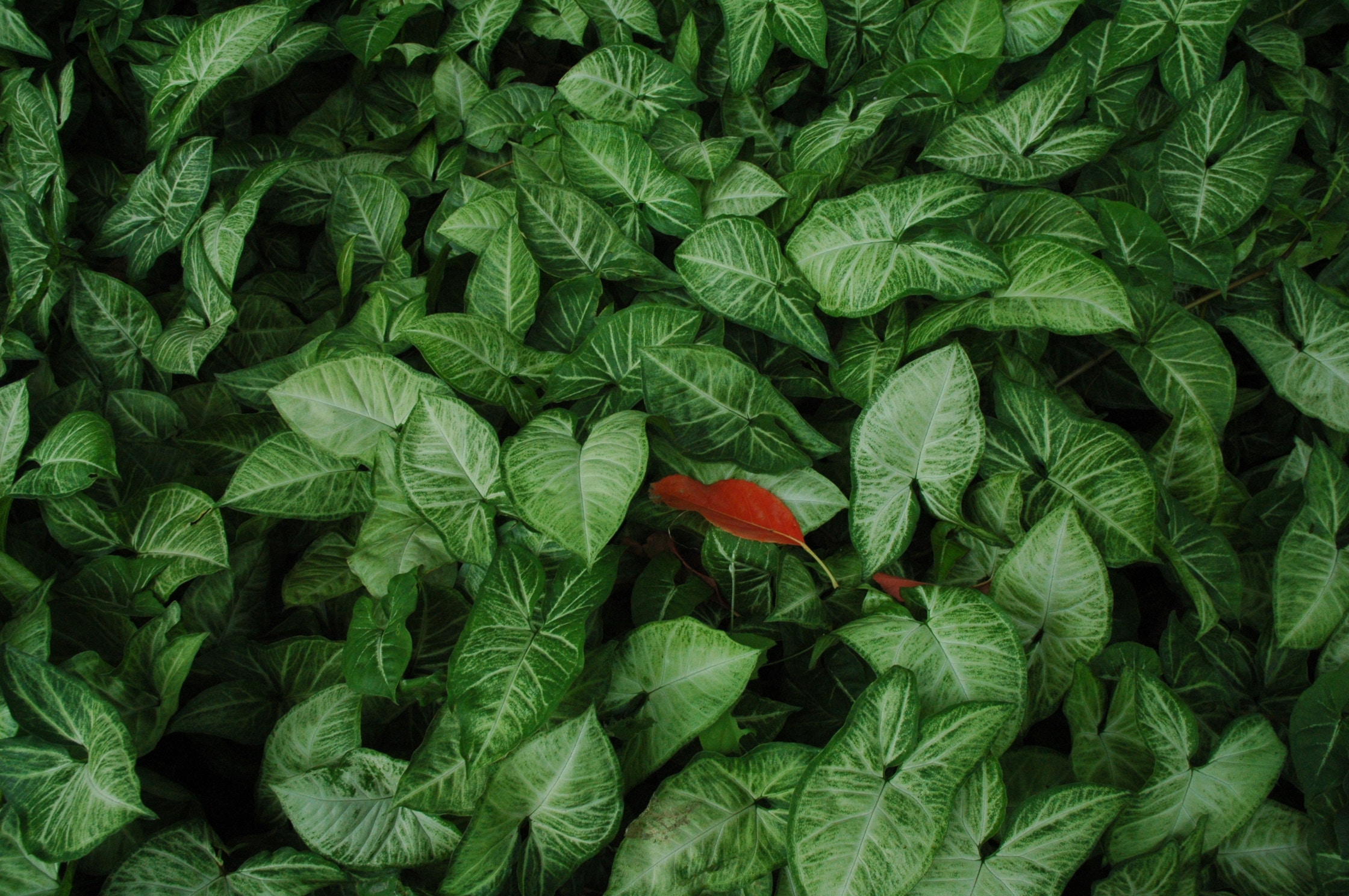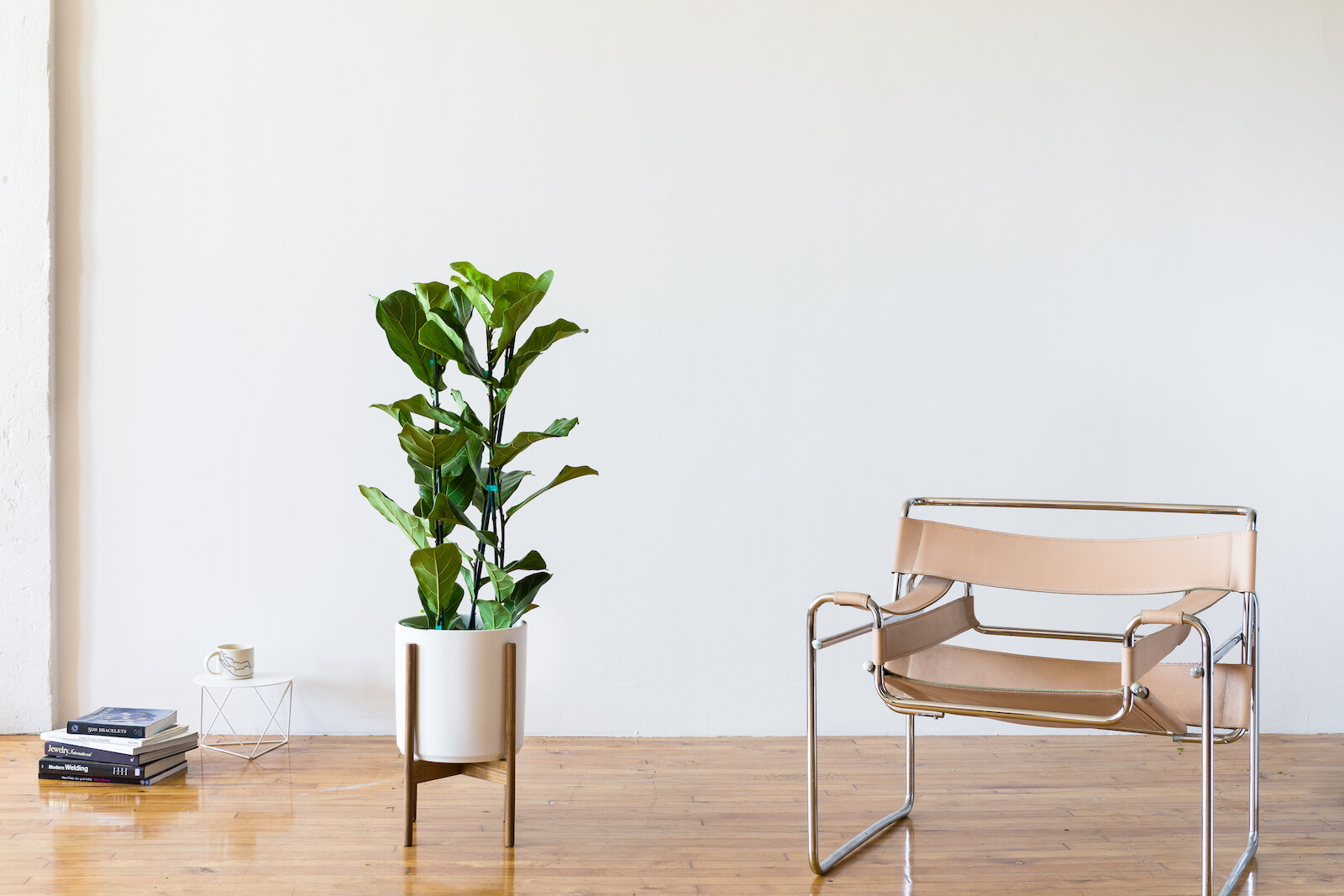Fiddle Leaf Fig Tree by Léon & George at Serpentine SF
Move over, mossy terrariums, there's a new plant in charge. The fiddle-leaf fig tree has started popping up in fashion spreads, high-end offices, and just about everywhere in between. The secret to the fiddle's popularity? An Instagram-worthy leaf structure that livens up every space it inhabits.
The New York Times called it "the perfect balance of volume and negative space, structure and whimsy." Today said it was "the plant taking over homes across America." They are go-to fixtures in the offices of luxury retail brands in Paris and San Francisco. And in 2017, the fiddle-leaf fig tree was Léon & George's best-selling plant of the year. Here's what makes it unique.
Why it stands out
The fiddle-leaf fig is a tropical tree native to western Africa. It thrives in warm, wet climates, which can be tricky to replicate indoors. But when potted and cared for, fiddles are long-lasting and vibrant, with broad violin-shaped leaves. They vary in shape and size, each one with its own personality and quirk. Some form tall columns, while others grow like trees, usually between two and six feet tall when potted.
Their full shape is what caught the attention of artists and architects who first used fiddles in their work. Fast-forward a few years, and they are some of the most sought-after plants of the decade. The recent hurricane in Florida, for example, temporarily depleted the supply and led to long waitlists for potted fiddle-leafs across the US.
Care + design: Tips for styling your fiddle
Fiddle-leaf figs photograph beautifully and they add character to any room they're in. But here's the drawback: they can be finicky and definitely require a little TLC. Light pruning will keep them looking fresh and happy -- just like you should feel when you're around them! For basic care, water once a week (less in winter) and spray the leaves regularly to create humidity. More care tips here.
When it comes to styling your fiddle, it's all about proportions. To make your plant the center of attention, try dusting the leaves to create a light-catching sheen. You can also trim lower branches to guide the growth up and out. Designers are drawn to fiddles because they are versatile and fit nicely in tight-cornered apartments or open-concept offices. The Léon & George team recommends giving your fiddle at least a foot of clear space in every direction, and pairing it with a sleek architectural planter that will really do it justice.
Last word: Go ahead, fall in love
The fiddle-leaf fig may not be the easiest plant to care for, but that hasn't stopped it from winning the adoration of millions. And as great as it looks in the photos, we promise it'll be even better in person. Ready to join the Fiddle club? The Léon & George team is here to help with more care tips and design pointers to get you started.
